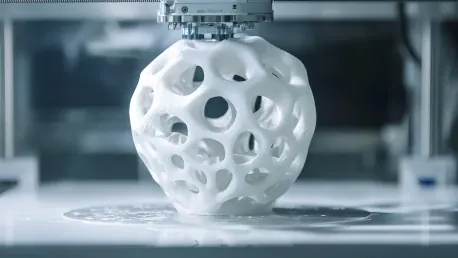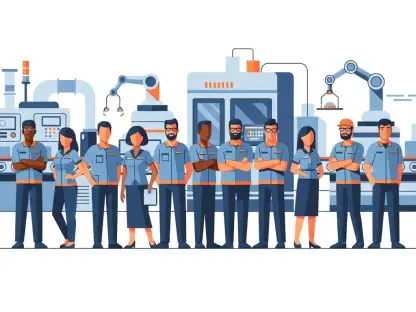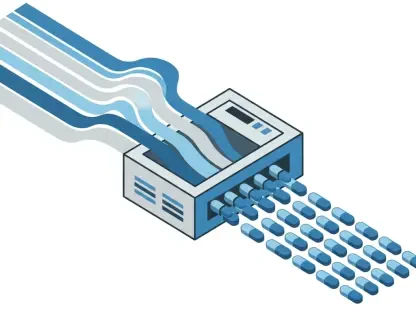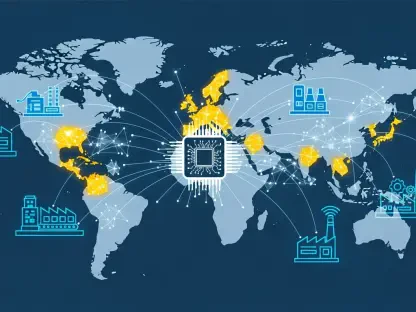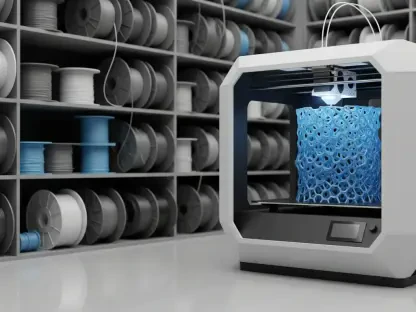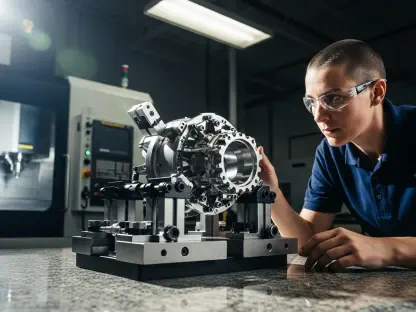3D printing, also known as additive manufacturing, has revolutionized traditional manufacturing processes by offering a multitude of benefits such as cost savings, material efficiency, and the ability to create complex structures. Initially emerging as a novel solution for producing prototypes, 3D printing technology has rapidly evolved into a cornerstone for a wide range of industries including healthcare, automotive, aerospace, and more. This article explores the advances in 3D printing technology, its wide-ranging applications across various sectors, and the exciting future potentials that lie ahead for this transformative manufacturing technique.
Reduced Costs and Time in Manufacturing
One of the primary advantages of 3D printing technology lies in its ability to economically produce complex parts and tools quickly. Unlike traditional manufacturing, which often generates significant waste through material removal processes, 3D printing minimizes waste by adding material only where it is required. This not only reduces material costs but also shortens production times dramatically. The economic implications of this are substantial, as businesses can save on raw materials and reduce the labor costs associated with traditional manufacturing methods. Moreover, the speed at which parts can be produced is significantly faster, allowing for more efficient workflow management and quicker time-to-market for new products.
In the realm of prototype production, 3D printing has proven to be a game-changer. It enhances the prototyping phase by enabling quick and cost-effective production of prototypes, allowing for rapid iterative testing and refinement. In the automotive industry, for instance, vehicle part prototypes can be swiftly created for wind tunnel testing and assembly checks, facilitating multiple design iterations in a short period. This rapid prototyping capability not only accelerates product development cycles but also helps in identifying design flaws early, thereby reducing the risks and costs associated with late-stage modifications.
Additionally, 3D printing supports the creation of highly complex and customized designs that traditional manufacturing methods struggle to achieve. This capability is particularly beneficial in industries like aerospace and automotive, where lightweight yet robust components are essential. The technology enables the production of personalized and customized items at lower costs, making small-batch manufacturing financially viable. Consumer electronics have also benefited from this aspect of 3D printing, with products that can be tailored to user-specific needs, thus enhancing consumer satisfaction and paving the way for more personalized experiences.
Simplified Supply Chain
3D printing streamlines the supply chain by enabling on-demand production, which drastically reduces the need for large inventories and complex logistics. Products can be printed as needed, and even near their end-use location, cutting down on transportation costs and shortening lead times. This not only helps in reducing overhead costs but also aligns production with actual demand, thereby minimizing the risk of overproduction and unsold inventory. Moreover, the simplification of logistics and supply chain processes allows companies to be more agile and responsive to market changes or disruptions, thereby ensuring a smoother operational flow.
The just-in-time production capabilities of 3D printing mitigate the risks associated with traditional supply chains, such as excess inventory and associated holding costs. By aligning production closely with actual demand, companies can respond more flexibly and promptly to market changes, improving overall supply chain management. This is particularly beneficial in industries that experience seasonal fluctuations in demand or those that require a high degree of customization. With 3D printing, businesses can essentially print on demand, thus ensuring that production schedules and inventory levels are tightly controlled and optimized for current market conditions.
Additionally, 3D printing’s potential for localized manufacturing reduces dependency on extensive supply chains. This localization can foster more sustainable practices by decreasing global shipping demands and related carbon emissions, promoting eco-friendly production models. Manufacturing products closer to their point of consumption not only saves on transportation costs but also reduces the carbon footprint associated with long-distance shipping. This convergence of economic and environmental benefits makes 3D printing an attractive option for businesses aiming to achieve sustainable growth.
Versatile Material Options
3D printing accommodates a diverse range of materials, including plastics, metals, ceramics, and composites. This versatility significantly expands its application across different fields where specific material properties such as strength, flexibility, and heat resistance are critical. For instance, metal alloys like titanium and aluminum are used for high-performance aerospace components, whereas composite materials are favored in the automotive industry to combine strength and light weight. The ability to choose from a wide array of materials makes 3D printing adaptable to a multitude of manufacturing needs, ranging from functional prototypes to fully operational parts.
The advancement in material science has further enhanced 3D printing’s capabilities. Researchers are continuously developing new materials to meet industry demands, from biocompatible materials for medical applications to durable materials for construction. This ongoing innovation opens new possibilities for custom applications and broadens the scope of what can be achieved with 3D printing technology. For instance, in the medical field, biocompatible materials are being used to create customized implants and prosthetics that fit patients perfectly, thus improving their quality of life. On the construction front, durable materials are enabling the creation of intricate and strong architectural elements that were previously impossible to manufacture using traditional methods.
Moreover, the ability to print with multiple materials simultaneously allows for the creation of complex, multi-functional parts. This not only improves the performance of the final product but also reduces assembly times, as intricate components can be manufactured in a single print cycle. This multi-material capability is particularly advantageous in the production of electronics, where components may need to exhibit different properties such as electrical conductivity, insulation, and mechanical strength. By integrating these varied functionalities into a single part, manufacturers can simplify production processes, reduce the number of parts needed, and improve overall product performance.
Fostering Modern Manufacturing Skills
In the educational sector, 3D printing is equipping students with the skills necessary for modern engineering and manufacturing. Many institutions now incorporate this technology into their curricula, offering students hands-on experience with real-world applications. By building tangible models, students gain a deeper understanding of theoretical concepts and enhance their creative problem-solving abilities. This hands-on approach not only makes learning more engaging but also bridges the gap between academic knowledge and practical skills, preparing students for the demands of the modern workforce.
Exposure to 3D printing technology prepares students for future industry challenges. As industries increasingly adopt additive manufacturing, graduates with experience in 3D printing are well-positioned to contribute to innovation and efficiency within their respective fields. This early integration of modern manufacturing tools into education fosters a new generation of engineers and designers proficient in cutting-edge technologies. These students are not just trained for existing roles but are also equipped to drive forward new developments and innovations in their fields, ensuring that they remain at the forefront of technological advancements.
Additionally, 3D printing facilitates interdisciplinary collaboration by bridging gaps between various fields of study. For example, engineering students can collaborate with medical students to create custom medical devices, blending technical know-how with clinical insights to solve complex healthcare challenges. Such collaborative efforts can lead to groundbreaking innovations, as the integration of different perspectives and expertise fosters a more holistic approach to problem-solving. As a result, educational institutions are not just producing specialists in individual fields but are also nurturing well-rounded professionals capable of thinking and working across disciplines.
Enhanced Speed and Precision
Recent advancements in 3D printing technologies, such as continuous liquid interface production (CLIP) and multi-material printing, are further enhancing the speed, precision, and material diversity of 3D printing. These improvements are broadening the application scope, allowing for faster production cycles and more intricate designs. For industries that rely on detailed and precise components, such as aerospace and medical, these advancements are particularly invaluable. With increased speed and precision, manufacturers can meet tight deadlines without compromising on the quality of their products, thus maintaining competitive advantage in a fast-paced market.
Continuous innovations in hardware and software are driving improvements in the resolution and accuracy of 3D prints. Advanced printers can now produce finer details and smoother surfaces, making them suitable for applications requiring high precision, such as in the aerospace and medical industries. These technological leaps not only enhance the aesthetics of the final products but also ensure that they meet stringent performance and safety standards. For example, in the aerospace industry, where precision is paramount, the ability to produce components with exacting details can significantly impact performance and safety metrics.
Moreover, the integration of AI and machine learning with 3D printing has the potential to revolutionize design processes. AI can analyze large datasets to optimize designs for better performance and reliability. This synergy between AI and 3D printing will lead to more sophisticated manufacturing workflows and highly optimized products. For instance, machine learning algorithms can predict potential weaknesses in a design and suggest modifications that optimize material use while maintaining structural integrity. This predictive capability not only enhances the efficiency of the design process but also ensures that the final products are both robust and reliable.
Broad Industry Applications
3D printing’s precise control over material deposition allows for the creation of customized medical implants and prosthetics tailored to fit individual patients’ anatomical structures. In healthcare, this customization has vastly improved patient outcomes by providing solutions that are not only functionally superior but also more comfortable for the wearer. Beyond implants, 3D printing is also used in the development of surgical instruments and pioneering bio-printing technologies for tissue and organ regeneration. These advancements represent a significant leap in medical capabilities, offering new hope for patients with complex medical conditions and paving the way for future medical breakthroughs.
In the construction industry, 3D printing is utilized to build complex structures with intricate designs that would be impossible or more time-consuming to create using traditional methods. This innovation in construction not only reduces labor costs but also allows for greater design flexibility and structural integrity. By printing building components on-site, construction projects can be completed faster and with less waste, leading to cost savings and more sustainable practices. Moreover, architects and designers are no longer limited by conventional construction methods, enabling them to explore new aesthetic and functional possibilities in their projects.
The automotive and aerospace industries have also embraced 3D printing for the production of lightweight yet durable components. The ability to reduce weight without sacrificing strength is critical in these sectors, as it directly impacts fuel efficiency and performance. By leveraging 3D printing, manufacturers can produce parts with optimized geometries that are difficult or impossible to achieve with traditional methods. This results in vehicles and aircraft that are not only more efficient but also capable of improved performance metrics. Additionally, the aerospace industry benefits from the ability to produce low-volume, highly specialized components on demand, reducing the need for extensive inventories and storage costs.
Addressing Challenges
Despite its numerous advantages, 3D printing faces some challenges. Scale limitations remain a significant technical difficulty, as printing large objects still poses considerable hurdles. While advancements are being made in large-scale additive manufacturing, achieving consistent quality and structural integrity over larger dimensions continues to be a complex problem. Material costs also present a barrier, as high costs of certain advanced materials can be prohibitive for widespread adoption. The expense of specialized materials, such as high-performance metal alloys or biocompatible materials, can limit the economic feasibility of 3D printing for some applications.
Achieving the desired mechanical properties consistently across different parts still requires optimization. Ensuring that 3D printed parts meet specific performance standards and mechanical properties is essential, particularly in industries where failure could have catastrophic consequences, such as aerospace and healthcare. Ongoing research and development efforts are focused on improving the reliability and predictability of 3D printing processes, aiming to produce parts with uniform quality and strength. This involves refining printing techniques, developing better materials, and implementing rigorous quality control measures.
Intellectual property and safety concerns also pose challenges. Protecting digital models and ensuring the safety of 3D printed parts are ongoing issues that need to be addressed. The digital nature of 3D printing introduces risks related to data theft, piracy, and counterfeiting. Ensuring that intellectual property rights are respected and protected is vital for encouraging innovation and investment in 3D printing technologies. Additionally, ensuring the safety and reliability of 3D printed parts is critical, particularly for applications where failure is not an option. Regulatory frameworks and standards are evolving to address these concerns, providing guidelines for safe and reliable additive manufacturing practices.
Conclusion
3D printing, or additive manufacturing, has transformed traditional manufacturing by introducing numerous advantages such as cost reductions, improved material utilization, and the ability to create intricate structures. Initially, 3D printing was a novel technique used primarily for developing prototypes. However, it has quickly advanced to become an integral part of various industries, including healthcare, automotive, aerospace, and more. In healthcare, for example, 3D printing is used to create custom prosthetics and even bioprinted organs. The automotive industry leverages this technology for rapid prototyping and the production of lightweight components. Aerospace companies employ it to manufacture complex parts that were previously impossible or too expensive to produce using conventional methods.
Moreover, 3D printing’s flexibility allows for innovative design and customization, making it possible to tailor products to individual needs. As the technology progresses, we can anticipate even more groundbreaking applications, such as the construction of entire buildings and advancements in sustainable manufacturing. This article delves into the significant advancements in 3D printing technology, its wide applications, and the promising future that lies ahead for this revolutionary manufacturing method.
